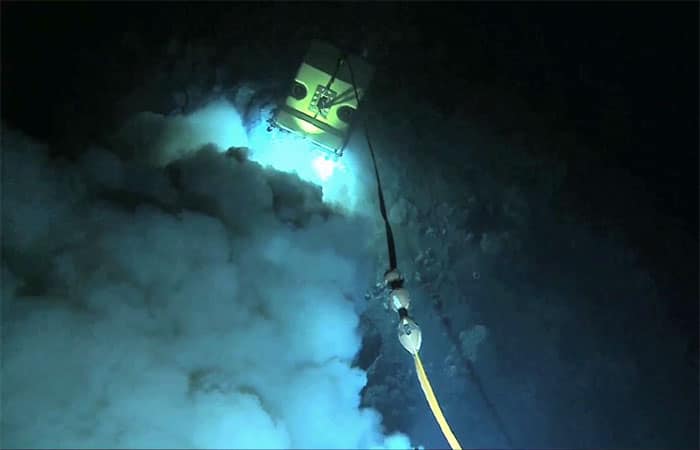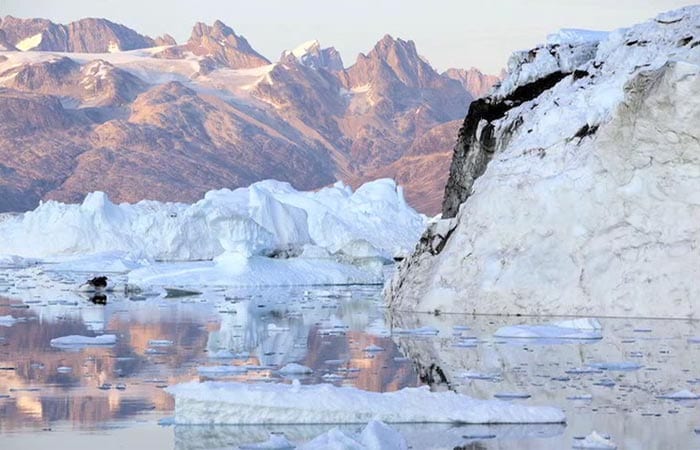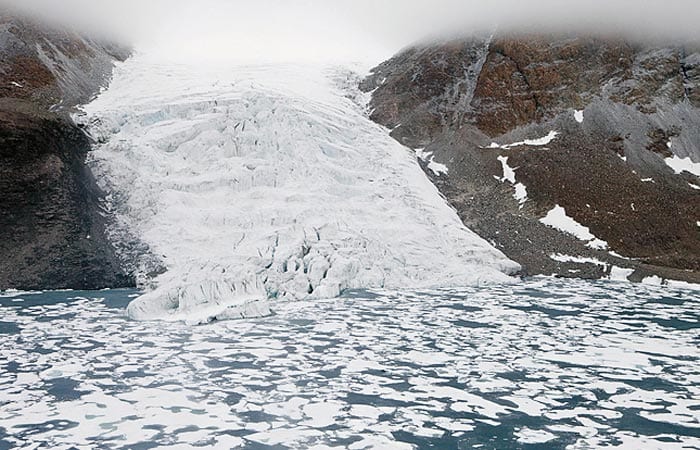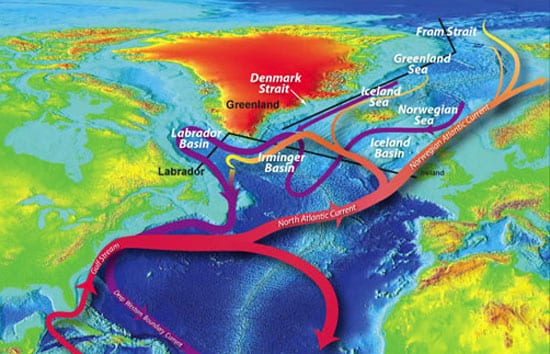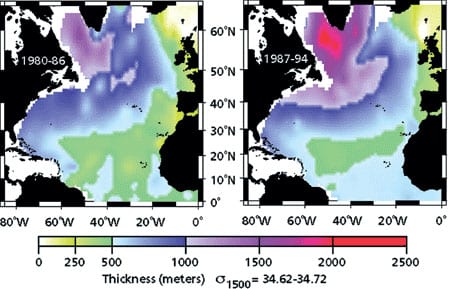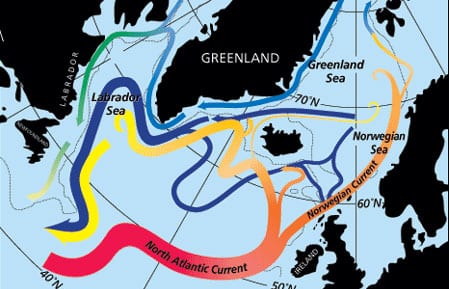Ruth Curry
Refine by
Date
Topic:
Article Type
Special Series
Author
Go Down Jason, Let My Mooring Go
In 2010, an experiment led by physical oceanographer Ruth Curry put six subsurface moorings on the seafloor to measure deep-sea currents. In 2012, when they went to retrieve the instruments, a trigger mechanism failed to…
A Glacier’s Pace
Time was, saying something moved “at a glacier’s pace” meant it was grindingly slow. No longer. Glaciers don’t move like that anymore. Since the early 1990s, glaciers in Greenland have been shrinking at an unprecedented…
Fresher Ocean, Cooler Climate
Large and climatically sensitive regions of the North Atlantic Ocean have become less salty since the late 1960s, a trend that could alter global ocean circulation and spur climate changes by the 21st century.
Labrador Sea Water Carries Northern Climate Signal South
Changes in wind strength, humidity, and temperature over the ocean affect rates of evaporation, precipitation, and heat transfer between ocean and air. Long-term atmospheric climate change signals are imprinted onto the sea surface layer, a thin skin atop an enormous reservoirA? and subsequently communicated to the deeper water masses. Labrador Sea Water is a subpolar water mass shaped by air-sea exchanges in the North Atlantic. It is a major contributor to the deep water of the Atlantic, and changes of conditions in its formation area can be read several years later at mid-depths in the subtropics. Mapping these changes through time is helping us to understand the causes of significant warming and cooling patterns we have observed at these depths in the North Atlantic and links the subtropical deep signals back to the subpolar sea surface conditions.
North Atlantic’s Transformation Pipeline Chills and Redistributes Subtropical Water
Warm and salty waters from the upper part of the South Atlantic flow northward across the equator and then progress through the tropical and subtropical North Atlantic to reach high latitudes. Beginning with the intense northward flow of the Gulf Stream off the East Coast of the United States, these waters are exposed to vigorous cooling, liberating considerable oceanic heat to the atmosphere. This is the first stage of “warm water transformation within the North Atlantic, a process that culminates in the high latitude production of cold and fresh waters that return to the South Atlantic in deep reaching currents beneath the warm waters of the subtropics and tropics.

